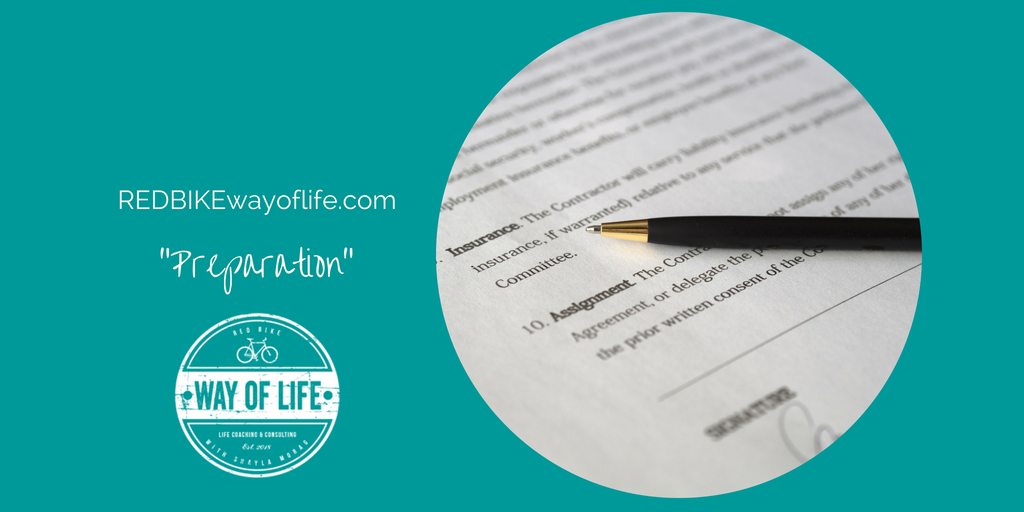
by Shayla Morag | Oct 16, 2019 | Caregiving, Handy Tips, Health, Support, The Red Bike Way
As a caregiver, it is important to be aware that fiber intake is the key to successful aging according to a recent study from Australia. Seniors with the highest intake of fiber had an almost 80% greater chance of living a long and healthy life.
Even the scientists were surprised by the results. Fiber had a greater impact than any other dietary factor they studied, including sugar consumption. Adults who ate more complex carbohydrates significantly lowered their risk for hypertension, diabetes, dementia, depression, and disabilities.
If you want to live a longer and enjoy a more active life without eating like a rabbit, study these practical tips. You’ll learn new facts about fiber and how to include more roughage in your diet.
Facts about Fiber
1) Understand your needs. The average North American eats about 15 grams of fiber a day, which is far below the recommended levels. Individual requirements decrease slightly with age, and vary from a minimum of 21 to 25 grams for women and 30 to 38 grams for men.
2) Cover both bases. Fiber comes in two forms, soluble and insoluble, depending on whether it dissolves in water. Soluble fiber lowers cholesterol and protects your heart. Insoluble fiber enhances your digestion and helps you stay regular. Eating a variety of foods provides enough of both.
3) Know the benefits. Foods rich in fiber make you feel full with fewer calories so you can manage your weight. They also help you stabilize your blood sugar and reduce your risk for certain cancers, heart disease, and diabetes.
4) Take it gradually. Give your digestive system time to adapt to more fiber. Add about 2 to 3 grams a week to avoid bloating and diarrhea.
5) Drink more water. Drinking plenty of water will maximize the digestive benefits of fiber, and minimize constipation and gas. Stay hydrated around the clock.
Eating More Fiber
1) Breakfast hearty. It’s easier to take in more fiber when you start early. Prepare a bean burrito or whip up a smoothie with kale and fresh fruit.
2) Adjust the menu. Bulk up the dishes you love with a few simple tweaks. Stir shredded cabbage or carrots into chili and meatloaf. Top off your pizza with mushrooms and onions. Sprinkle a cup of beans into your salad.
3) Switch to whole grains. Trade in ultra-processed white bread and rice for their healthier versions. Order brown rice when you’re eating out. Make sandwiches with whole wheat wraps.
4) Cook fast. Some cooking methods, like boiling, rob vegetables of fiber and important nutrients. Steaming or microwaving will let you enjoy all their goodness.
5) Bake at home. You don’t even have to give up cookies and cake to make room for fiber. Rely on your own oven instead of supermarket brands so you can use ingredients like oats and whole wheat flour.
6) Keep the peels. Stop wasting apple and potato skins. Many vegetables and fruits have edible peels and seeds packed with fiber.
7) Snack smart. Use snacks as well as meals to help you reach your fiber goals. Dip raw vegetables into hummus. Create a trail mix with dried fruit, nuts, and seeds.
8) Read labels. Manufacturers know that consumers are looking to eat more fiber. Check the label to see how many grams a product really contains. When an item says it’s an excellent source of fiber, it must contain at least 5 grams per serving.
The verdict is clear. Fiber can help manage weight now, and help protect from heart conditions and other diseases with the aging process. To help reach the golden years with fewer health issues and higher functioning, eat more complex carbohydrates like vegetables, nuts, breads, and fruits.

by Shayla Morag | Jan 06, 2019 | Balance, Caregiving, Creativity, Self-Compassion, The Red Bike Way
Creativity
is the ability to make something new or to develop new ideas. Developing more
creativity can benefit your career, relationships, and hobbies. Children love
to be creative, but many adults have less motivation to create. There are also
many obstacles to creativity.
Stack the
deck in your favor by dealing intelligently with most the common barriers to
creativity:
Fear of
ridicule. As
they say, nothing ventured, nothing gained. No matter what you do, someone will
provide criticism. Learn to ignore the naysayers and let your creativity shine.
Fear of
failure. It can
be the fear of losing money or valuable time. Or it can be a simple fear of
failure. You’re tough enough to handle it. You’ve already failed thousands of
times in one way or another and you’ve survived. What would happen if you did
fail?
- Time and space energize creativity. It’s more challenging to come up with a brilliant idea if your kids are calling your name or your phone is chirping at you every 30 seconds. Schedule your creative time to minimize as many interruptions as possible. Early in the morning and later in the evening can be the best options for many.
- A distraction is an interruption you give yourself. How do you commonly waste time? Remove those distractions from your immediate environment. Put your cell phone on mute and throw it in the drawer. Turn off the TV. Focus 100% on your creative activity. Distractions are controllable. Have the self-discipline to control them.
Past
experiences. Your
past affects your current thinking and beliefs. Attempt to open your mind to
all the possibilities. Just because something didn’t work once in the past
doesn’t mean it can’t work today. Let go of the past and free your creativity.
Stopping
too soon. Once a good idea is found, it’s common to stop looking for a
better solution. Are you sure you’ve chosen the right color for your painting?
The right word for your novel? The right idea to make $10 million?
- Once you’ve found a good idea, keep looking for an even better one.
- Stress and creativity rarely go hand in hand. Whether it’s the stress of being tired, running out of time, financial issues, or illness, creativity is more challenging than when you’re relaxed. Find time to relax and decompress before starting a session of creativity. Your results will be enhanced.
Negative
moods. It’s not just stress.
Anger, jealousy, fear, impatience, sadness, or hopelessness can also be
barriers to creativity. Studies have shown that creativity tends to peak while
experiencing strong, positive moods.
- Do whatever is necessary to boost your mood before accessing your creativity. Take a walk, call a good friend, or listen to uplifting music. What makes you feel better when you’re in a bad mood?
Too many
options. It
can actually be easier to find your creative streak if you limit your choices.
Try to make a painting with only three colors. Write a short story with only
300 words. Or compose a song with only a few chords. Having too many choices
can be a challenge in itself. Try limiting your options if you’re stuck.
If you
can’t get your creative juices flowing, maybe something is in your way. Your
creativity is a significant part of your uniqueness. Avoid the common obstacles
to creativity and show the world what you have to offer. To really boost your
creativity, try using it regularly. And start today!

by Shayla Morag | Nov 23, 2018 | Balance, Caregiving, Health, Self-Compassion, The Red Bike Way
When caring for others, it can be easy to forget about our own needs. It may take more than an apple a day to keep the doctor away, but a healthy diet and other simple lifestyle changes can keep you from becoming ill. Learn how to develop habits that will keep you fit and strong.
Dietary Changes
Many experts blame the Standard American Diet (SAD) for high rates of obesity, diabetes, depression, and other serious conditions. Good nutrition can strengthen your immune system and lower your risk for many illnesses.
1. Eat more produce. Fruits and vegetables are nutrient dense and light in calories. They’ll boost your immune system and help you stay hydrated. Plus, all that fiber can lower your risk of diabetes.
2. Focus on whole foods. Processed foods are usually loaded with excessive fat, sugar, and salt. Try eating foods in their natural state.
3. Limit alcohol. Too many cocktails can damage your liver and other organs. Most experts recommend up to one drink a day for women and two for men.
4. Manage your weight. Carrying around too many pounds increases your risk of heart conditions, arthritis, and certain cancers. Stay slim by watching calories and leading an active life.
Other Lifestyle Changes
Here are a few more changes to go along with your balanced diet. They’ll have a major impact on your body and mind.
5. Move around. Physical activity strengthens your heart and muscles. Aim to exercise at least 3 days a week. Take the stairs instead of the elevator.
6. Sit less. Research suggests that the longer you sit, the poorer your health may be even if you exercise. If you have a desk job, try taking walking breaks every half hour. Cut back on your TV time.
7. Do yoga. While any form of exercise and relaxation can be beneficial, yoga seems especially powerful. A study at Massachusetts General Hospital recorded a whopping 43% reduction in healthcare use among patients who studied yoga for a year.
8. Deal with stress. If yoga is not your cup of tea, there are other ways to keep tension from piling up. Book a massage or listen to gentle music.
9. Be happy. The more you’re satisfied with your life, the less you’ll need your doctor. On a scale of 1 to 6, a patient could expect an 11% decrease in doctor visits for each level of higher life satisfaction, according to one University of Michigan study.
10. Adopt a pet. Holding your cat is good for mental and physical well being. The CDC says pets help people lower their blood pressure, cholesterol, and triglyceride levels. They also provide an antidote to loneliness.
11. Connect with others. Speaking of loneliness, support from humans helps too. Close social ties can help you catch fewer colds, and may even extend your life.
12. Sleep well. Adequate rest and sleep is vital to healing. Turn off the computer and TV in the evening and go to bed on time.
13. Quit smoking. Giving up tobacco may be the most important thing you can do for your health. It takes an average of 5 to 10 attempts to quit for good, so hang in there.

by Shayla Morag | Aug 17, 2018 | Caregiving, Handy Tips, Recipe, The Red Bike Way
When I caregived my Mom, I found it super important that Mom and I eat together with a routine so that she would get healthy nourishment and food didn’t get hid or fed to the dog under the table. I discovered that preparing familiar recipes enticed appetite (and memories!) For example, my Mom recalled picking blueberries when she was a girl when I made blueberry cake or a smoothie and shared interesting stories about living on the back road. Having a bird feeder outside the window also inspired meal time conversations. Using dessert plates without patterns and serving small portions and soft foods seemed to work best.
Thought I would share my ‘Ginger Zinger Smoothie’ which was a popular choice at my former cafe. Enjoy!
1 frozen banana (8 chunks)
1/2 cup frozen blueberries
2 tsp. grated ginger
2 cups frozen kale
1 cup almond milk
1 tbsp. chia seeds
1/8 tsp. ground cinnamon
1 tbsp. raw honey

by Shayla Morag | Jul 05, 2018 | Caregiving, Handy Tips, Self Care, Self-Compassion, Self-Talk, The Red Bike Way
As a caregiver, we can sometimes feel stuck and need to look in the right place for answers. Asking yourself questions is an excellent way to find the answers you need. The right questions can be stimulating to your thought process. Ask yourself these questions and you’ll get answers that you can use.
Ask yourself the questions that matter the most:
How do I sabotage myself? We all sabotage ourselves. We talk ourselves out of things that would lead to success and happiness. We procrastinate. We compare ourselves harshly to others.
Make a list of the ways you’ve sabotaged yourself in the past. Be on the lookout for these same patterns in the future.
How can I use more of the useful knowledge and skills I already have? In today’s world, we know more than we ever have. The average person knows enough to make a million dollars, have the body of a Greek god or goddess, and marry a supermodel. Why don’t you use all the great things you already know?
Consider all the things you know about diet and exercise. Do you apply that knowledge?
How much do you know about saving and investing for the future? What can you do to brighten your financial outlook?
How much do you know about relationships? Are you taking full advantage of that information? Why not?
Imagine what your life would look like if you applied everything you already know. Most people are convinced they don’t know enough. In reality, they just don’t perform the actions that they know to be effective or avoid counterproductive actions.
Make a list of everything you do that you know you shouldn’t. Then make a list of everything you fail to do, but know that you should.
What can I control? What can I not control? We spend far too much time worrying about things that can’t be controlled. We spend too little time effectively controlling those things that are within our realm of control
Most of our childhood and early adulthood are spent trying to control the uncontrollable. Maturing is understanding what can be controlled and then figuring out the best way to control it.
What are you worrying about right now that you can’t control?
Why am I doing all of this? Most of the things we do are for others. You might think you’re going to the gym for yourself, but you might actually be going to impress others with your amazing physique.
How much are you actually doing for yourself? How many things do you do only because others are watching? Would you drive a luxury car if no one would ever know about it?
Are your goals about satisfying yourself or impressing others? Are you only trying to live up to the expectations of others?
What is most important to me? We spend too much time on frivolous activities, largely because we haven’t defined our priorities. What is most important to you?
If you could only have one career for the rest of your life, what would it be?
If you could only be with one person for the rest of your life, what characteristics would that person possess?
What are the three places you’d most like to visit?
What are the three things you’d most like to accomplish?
What are you going to make a priority in your life?
Consider the questions you ask yourself on a regular basis. In one form or another, most people are asking themselves, “How can I distract myself until…” By asking yourself more effective questions, you’ll get the answers you need to put your personal development into overdrive.

by Shayla Morag | Jun 19, 2018 | Caregiving, Grief, Preparation, The Red Bike Way
When the Power of Attorney (POA) documents are in place for your loved one, it is really wise to make several ‘validated’ copies and scan them for future use. This document becomes extremely important as the years go by. You will need to send it to government departments, insurance companies, and banking institutions so that you can act on your loved ones behalf. Without the POA on file, you will not be able to request, change, or update information. Be proactive as it will save a lot of time and frustration.







